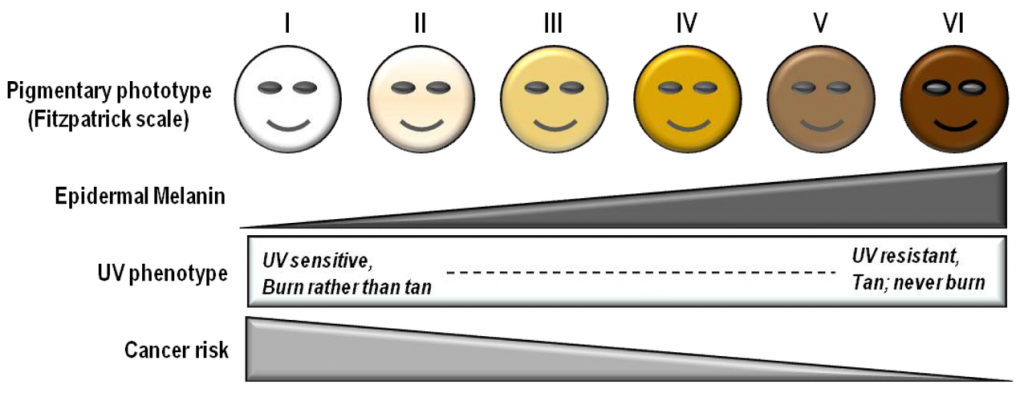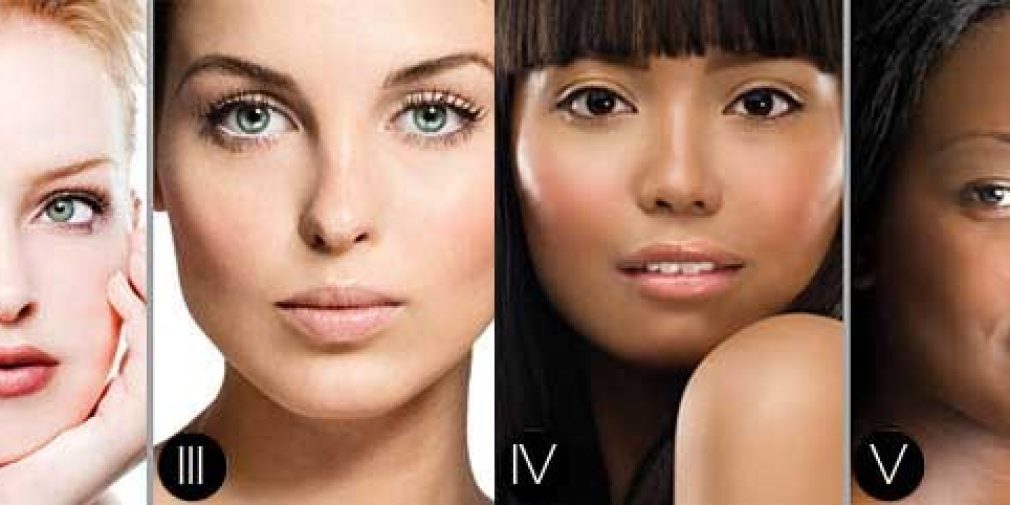Skin types according FITZPATRICK SCALE

You should know what yours is skin cancer risk according Fitzpatrick scale.
| Fitzpatrick Skin Type I | White, very fair, skin that always burns in the sun and never tans. |
| Fitzpatrick Skin Type II | White, fair skin that usually burns in sun, but can tan with difficulty. |
| Fitzpatrick Skin Type III | Beige skin that tans to brown and sometimes burns. |
| TFitzpatrick Skin Type IV | Medium brown skin tone is the norm. Tans easily to a dark brown and rarely burns. Determining a skin type IV is a little more complicated than 1-2-3. |
| Fitzpatrick Skin Type V | Dark Brown, rarely burns and tans easily. |
| Fitzpatrick Skin Type VI | Black skin never burns. Similar to skin type V, skin type VI is pretty rare. |

What skin you are in?
Your skin can change over time. Skin you had being young are more likely to change in the future. There are many factors that influence skin appearance and its condition. It is important to keep observing it and adopt daily routine at its present state.
Combination & Oily Skin: Combination skin can be oily in some areas, like the T-zone, and dry in others with overly dilated pores and a shiny complexion. Oily skin tends to be oily all over with enlarged pores and a thick, shiny complexion that is prone to blackheads and breakouts.
People with oily skin tend to over cleanse in the hope of reducing oiliness but unfortunately this tends to have the opposite effect as the body produces more and more oil to counteract the astringent effects of harsh cleansers. In fact, if you use an oil based cleanser and a good quality moisturiser (with SPF 30 specifically for oily skin) for a few weeks, you will likely find that the oiliness your skin improves over time.
Dry Skin: All-over dryness with a rough, reddish complexion, almost no visible pores, less elasticity, and more visible lines. Dry skin can crack, peel, or become itchy, irritated, or inflamed. If it’s very dry, it can become rough and scaly, especially on the backs of your hands, arms, and legs. Dry skin may be caused or made worse many things, like your genes, aging or hormonal changes, long, hot baths and showers, Ingredients in soaps, cosmetics, or cleansers, weather such as wind, sun, or cold, indoor heating, medications and UV especially from tanning beds.
Normal Skin: Not too oily or too dry with few or no imperfections, an even complexion and no sensitivity.
Sensitive Skin: Easily irritated skin that shows up in the form of redness, itching, burning or dryness.









